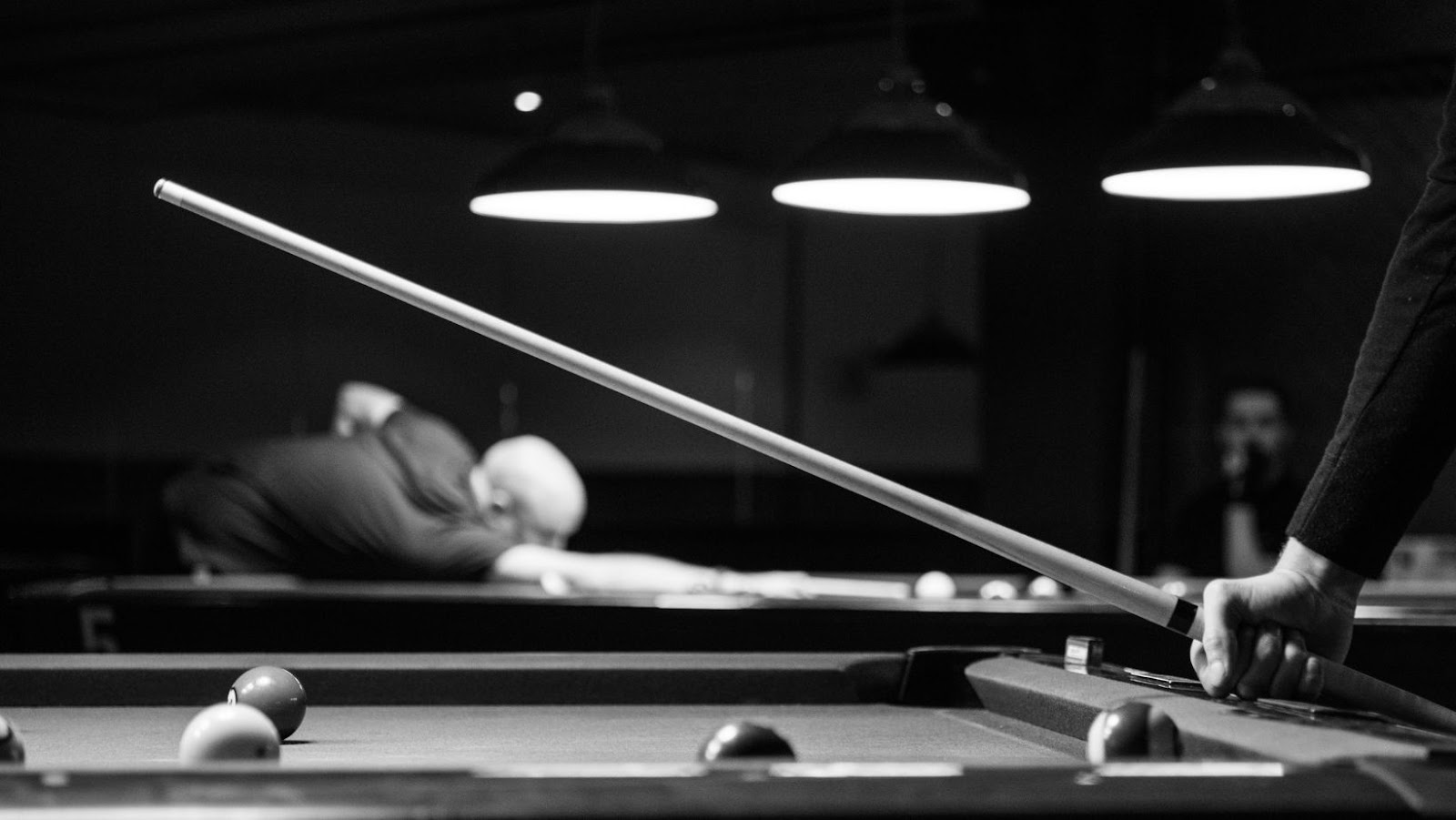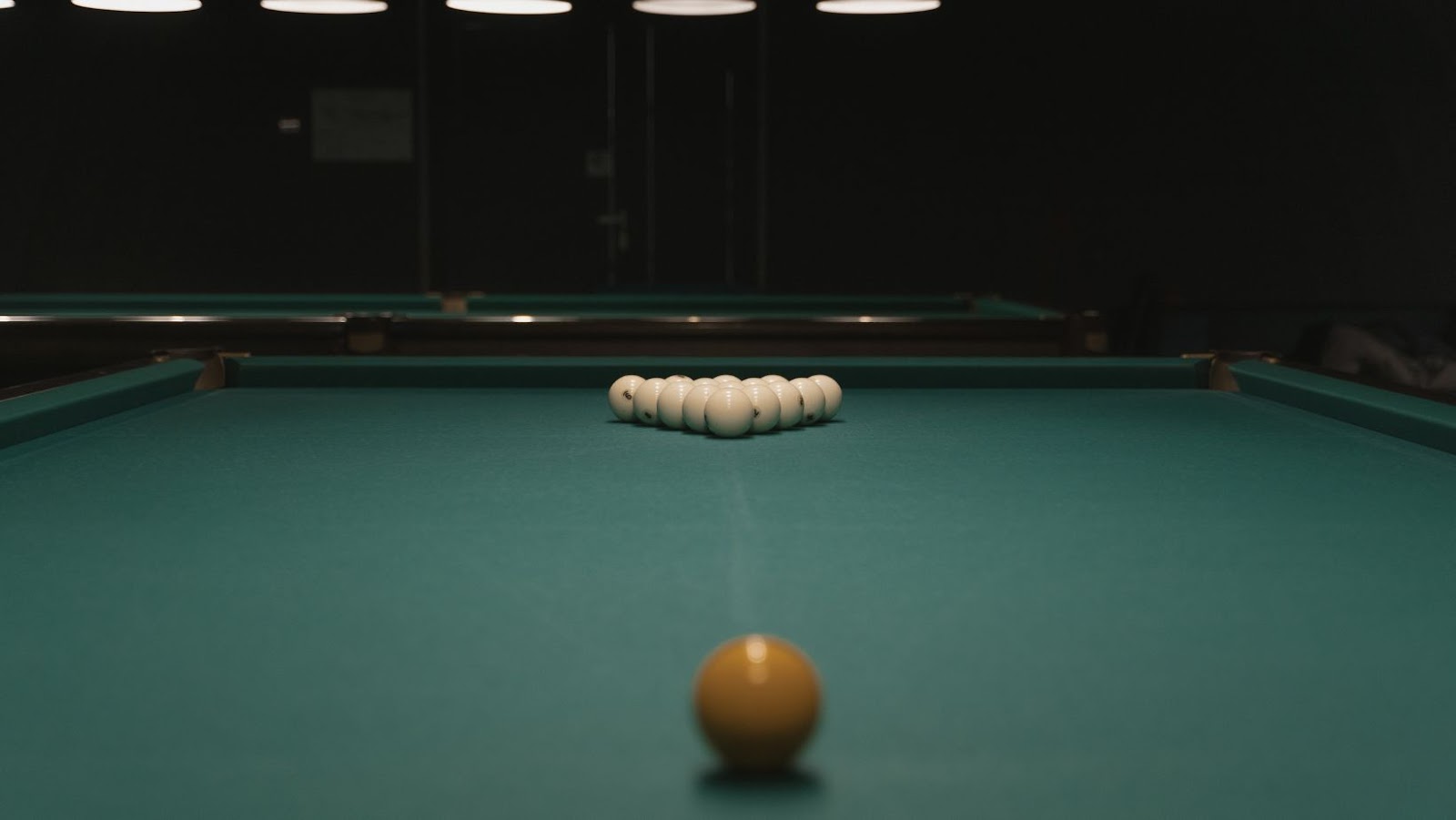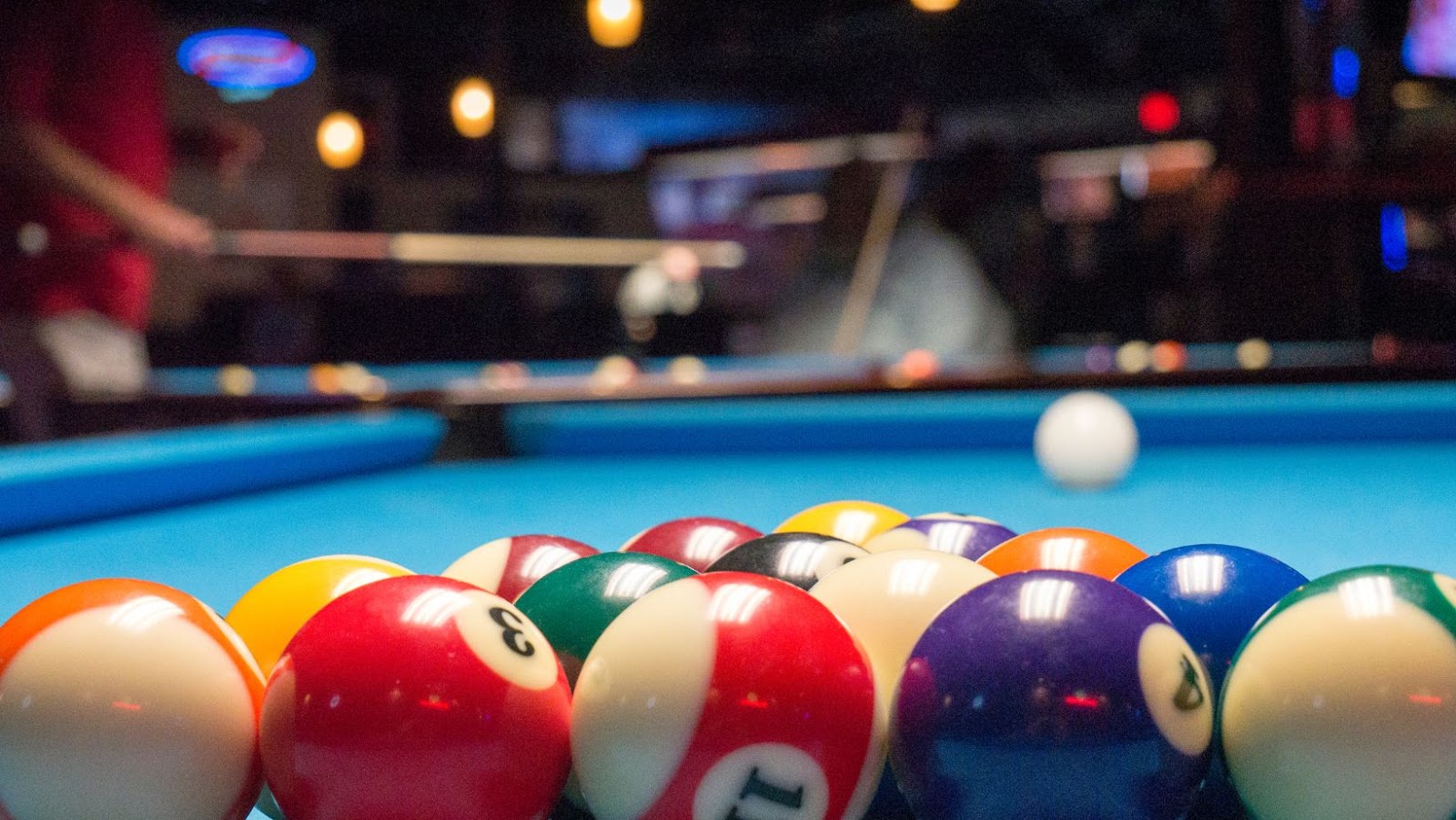Are you confused about what’s the difference between billiard and pool tables? It’s time to find out!
In this article, we’ll guide you through the distinct features that make a billiard table different from a pool table. Let’s get started!
Introduction to Billiard And Pool Tables
Billiard and pool tables are believed to have originated in 15th century Europe, though their exact origins remain a mystery. Whereas billiards was once the favored game of kings, today it is still popular in sport competitions and in casual play. Billiard and pool tables are designed for this purpose, so depending on your needs you may opt for one table over the other.
It is important to know that the terms billiard and pool are often used interchangeably although technically they do differ. Billiard tables typically have a larger playing area than that of a pool table, with cushioned edges of slightly different heights than the rest of the playing area to enable shots angled off the sides or ends of the table. On a pool table, cushioned edges are level with each other creating consistent play regardless of where on the table you shoot. Generally speaking, billiard tables can come with 1-3 slates while pool tables normally only have 1 slate as it is not necessary for them to be as precise as a billiard table as balls do not need to react differently when rolled off certain edges at fixed angles.
Billiard vs Pool Table
When it comes to differences between billiards and pool tables, there are both surface and equipment distinctions. Billiard tables are larger and thicker than traditional pool tables. They will typically measure 10 to 12 feet in length and incorporate additional features such as diamond-shaped corners, larger pockets, and even a different weight design than a standard pool table. The most obvious difference between billiard and pool tables is the playing equipment. Both game varieties utilize balls of various sizes, but for the sake of regulation — playing on an official tournament standard table — there can be considerable differences between the two types of balls used for play. Notably, billiards use heavier balls that are typically 2-1/12 inches in size while smaller (2-1/16 inch) cue balls made of plastic or resin material are used in pool games. Furthermore, each game variety utilizes its own specific type of stick or cue; the longer reach associated with billiard sticks help accommodate the greater distance between player and target ball on larger tables compared to those designed for pool play. Depending on manufacturer design specifications there can be slight variations between cues used in each game; however generally speaking they’re either made out wood or a combination of wood and carbon fiber materials to improve long-term durability.
History of Billiard And Pool Tables
The game of billiards dates back to the 15th century, when it was played by royalty on specially designed tables in England and France. It quickly grew into a variety of forms and eventually found its way to America by the early 19th century. Pool, on the other hand, originated from an older version called English Billiards and only began to be widely played in the United States sometime around 1878.

When looking at modern tables, there are three main differences between billiard and pool tables that you’ll want to keep in mind. First is the table size; on average billiard tables are about 3 feet longer than regulation-size pool tables. This allows for more room when playing certain popular games such as Snooker and Carom Bille, which require more strategic shot-making.
Second is the felt surface; while most pool tables are covered with French cloth with a tight nap weave (to create less friction when launching balls across long distances), some billiard leagues prefer full-size linen or velvet cloths as they give players more control over ball movement. Lastly is table pockets; traditional pockets found on billiard tables tend to be rubber and much shallower than those found on pool tables.
Overall, both types of table are great fun but depending on what type of game you intend to play and with whom will help determine which table is right for you!
Types of Billiard And Pool Tables
Billiards and pool tables come in a variety of sizes, shapes, materials and features for recreational purposes. Some tables are crafted for tournament play while others may feature customized artwork. The two main categories of billiard and pool tables are categorized as either a true billiard table or a pocket billiard table.
True Billiard Tables: These refer to traditional tables that have been used since the 15th century. Includes the antique style pool tables, snooker tables (longest of all types) and carom tables (a variation of snooker without pockets). True billiard tables typcially require more space than other types.
Pocket Billiard Tables: This is the most popular type that comes in all different shapes, sizes and materials. The most common form is an eight-foot by four-foot slate-bed table, which is designed with six pockets along all four edges of the playing surface. Commonly known as pool or billiards, this version allows for balls to be pocketed into each individual pocket in order for players to score points or win the game based on universal rulesets regarding pocketing balls prior to opponent’s turn or during “breaking” rounds.
Billiard And Pool Table Accessories
In addition to billiard and pool tables, there are many different accessories that can enhance your game. Balls, racks, brushes and chalk are just a few of the items most commonly found in a game room. With a variety of sizes, shapes, materials and styles available, it’s easy to find the perfect accessory to fine-tune your gameplay.
Balls: A full set of billiards or pool balls includes 15 numbered objects in white or multi-colored configurations. The cue ball is usually marked with either a circle or a spot (or both) so it can be easily identified as the “striker ball” used to pocket other balls during play. Standard sizes range from 57mm–64mm (2 1/4 inch–2 1/2 inch).
Racks: A triangular-shaped rack holds all 15 balls for the opening break shoot of each frame (also called rack or triangle). They come in various sizes depending on the shape and size of billiard or pool table being used for play. Additionally some firms produce racks specifically designed for 8-ball play only – these have round pockets which can accommodate up to 8 object balls at once plus one cue ball at the top point.

Brushes: Brushes should be included in any game room set up to remove dust, dirt and debris from tables regularly — this will help maintain smooth playing surfaces over time as well as avoid unnecessary wear on felt covering materials. Reverse wire push brooms may also be used but with more care taken due to their slightly harsher bristles.
Chalk: As an essential accessory in any game room where billiards or pool is played regularly, chalk is used on cues at the start of each frame when they come into contact with an object ball — this creates additional friction between both surfaces providing more grip on impact thus ensuring better shot accuracy while protecting expensive cloth weave covers from damage caused by steel tips wearing down over time (resulting in irregular spin control and rebound shots). There are different types available including powder.
How to Select a Billiard or Pool Table
When you purchase a billiard or pool table, you are making an investment in recreation and leisure. There are several factors to consider when selecting either a billiard or pool table. The size and type of the room, the budget, and the personal preference will influence your purchase so make sure you take these points into account when making that decision.
Different types of tables are available for different sizes of rooms. An 8-foot table is suitable for a room size of 16 feet by 13 feet while a 9-foot table needs at least 19 feet by 16 feet. Standard heights range from 30 inches to 34 inches but custom sizes can also be made as per your requirements. Traditional billiard tables are made from wood but may be covered with wood veneer over solid wood or chipboard, to give an extra soft touch. Pool tables may be either wooden or slate and usually have four legs or cabinet style design for storage purposes.
When it comes to budgeting for a billiard or pool table, investing in quality is recommended – unlike furniture or other equipment that wears down over time, these billiards and pool tables are meant to last several decades with proper care. Quality components such as timber and slate play an important role in determining the kind of surface these games will give you – smoothness that deter playing perfectionists! A lower price often means less durability in materials used; therefore it’s important not just to focus on cost savings but on quality as well when it comes to purchasing a billiard table.
The appearance of your game room should also be taken into consideration before deciding which type of game table will best suit your own taste and style preferences – none more than others being better suited than others; rather, consider what color palette fits best with your themes both inside the game room itself and throughout house’s interior design. All modern tables come with various color ranges; however, classic oak designs often go best within rustic settings combined with classic decor whilst metallic gray looks fit most modern home designs due to their neutral colors. Lastly don’t forget about accessories such as cue racks, chairs , dust covers etc., which can add much-needed character to the entire piece within any setting!
Maintenance of Billiard And Pool Tables
The maintenance of billiard and pool tables is key to ensuring they remain in good condition. Regular cleaning, especially after heavy use, will help maintain the table’s beauty and peak performance. It is also important to consider the surrounding environment such as keeping away high humidity levels when maintaining your table. This article will cover the cleaning, restoration and repair procedures used on modern billiard and pool tables.
Cleaning: Keeping your ball rolling smoothly is important for quick games with minimal interruptions. Cleaning is necessary for maintaining an efficient roll of the balls on your pool or billiard table. Weekly cleanup can be done with a simple dusting and vacuuming of both the surface of the cloth and underneath it. Specialized cleaning solutions are available to help prevent any grimy build up that may occur over time from dirt, grime, rests or other environmental issues such as smoke residual that may have accumulated over time from players smoking in an indoor environment.
Restoration: When it comes to restoring your table to its original glory there are specialized tools such as a professional wax brush which can be used to apply wax onto the felt cloth surface helping keep it smooth while preventing any clumping or friction issues concerning ball movement worth addressing during regular maintenance procedures if feasible. Professional repair technicians are available to help restore existing problems such as misaligned pocket repairs, straightening of slate bed irregularities, replacing worn out cushion rubber or even recovering worn portions of felt cloth when required with new material able held together by either staples ,re-draw laser seams or even velcro depending on budget which can help extend its lifetime significantly given proper care.
It is always important to make sure that both materials used and installation procedures follow industry standards otherwise you may run into future troubles down the road resulting in more expensive repairs due improper installation detail differences worth considering before tackling them on your own if available resources are limited physically or financially speaking its worth having someone experienced take care if possible given how complicated modern pool tables have become nowadays without specialized equipment designed designed specifically for pool & billiard service use involving accuracy repairs beyond most hobbyists capabilities at home.
When deciding between a billiard table and a pool table, there really is no right or wrong choice. Billiard tables are great for more serious players looking to practice their shots in a larger room. With its thick edges and smooth cloth, they also offer the classic look of an elegant game room. However, if you’re on a budget and want something quick to set up in your home, then pool tables are the way to go. They’re smaller, lightweight and often come with all the accessories you need for the game. Whichever one you choose, always remember to keep safety in mind before playing!
